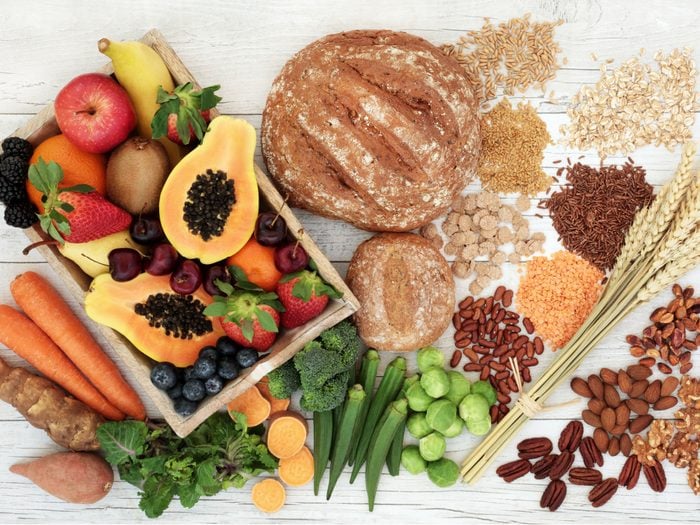
Why Choose High Fibre Foods?
Dietary fibre is a type of carbohydrate that can help to lower your risk for diseases such as colon cancer and heart disease, all while promoting healthy digestion. As fibre travels through the digestive system, it remains largely unchanged. This is important because it reaches our gut bacteria intact, where it is digested with the help of specific enzymes. That process reduces gut inflammation, produces nutrients, and can prevent or improve various digestive disorders, such as diverticulitis (small pouches in your digestive system that can become inflamed), hemorrhoids, diarrhea and constipation.
Our bodies need two types of fibre: soluble and insoluble. Soluble fibre dissolves in water, and includes foods like oatmeal, beans and the flesh of apples. This type of fibre helps regulate blood sugar and cholesterol, and also helps to promote regular bowel movements. Insoluble fibre does not dissolve in water, and includes things we think of as “roughage,” such as leafy greens, certain nuts and the skins of fruits like apples, pears, and grapes. This type of fibre helps to prevent constipation and helps food move through the digestive system.
Erica MacDonald, a registered dietitian at Dalhousie University in Halifax, says women should get around 25 grams of fibre a day, while men should consume about 38 grams. As you increase the amount of high fibre foods in your diet, MacDonald suggests increasing the amount of water you drink, too. “If we’re putting too much fibre in over a short period of time, especially with not enough water, it can cause bloating, gas and constipation.”
To get more fibre in your diet, you’re not limited to your grandparents’ bran flakes. Here are 12 delicious and nutritious high fibre foods to add to your daily diet.
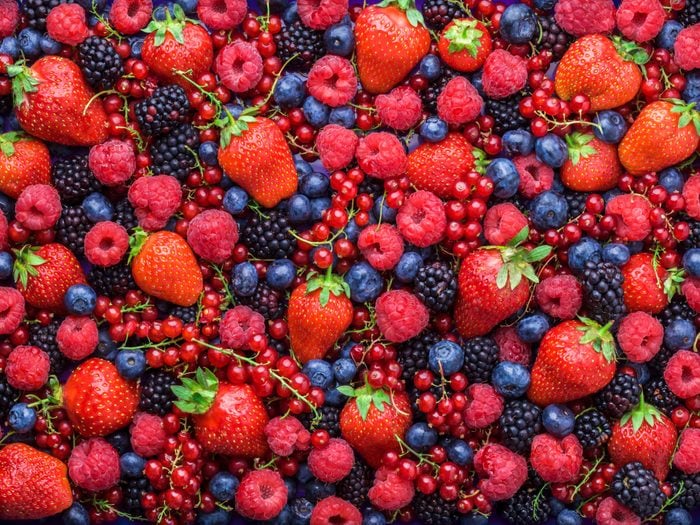
Berries
Raspberries, blackberries, strawberries, blueberries—no matter which berries you prefer, they’re all high fibre foods and are easy to eat on their own or in cereals, salads or baked goods. While the amount of fibre in each type of berry is different (raspberries have the highest fibre content), all of them provide the health benefits of fibre along with several other nutrients, vitamins and minerals.
Brush up on the impressive benefits of wild blueberries.
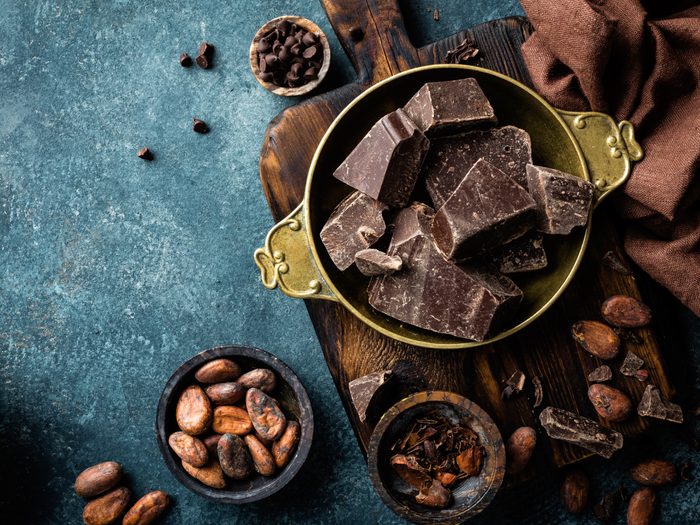
Dark chocolate
If you’ve got a sweet tooth, you’re in luck. Dark chocolate contains a whopping 10.9 grams of fibre per 100 grams. Just make sure you’re picking a chocolate with a high cacao content (70 percent or higher) to avoid unnecessary sugars.
Don’t miss our ultimate guide to healthy grocery shopping.
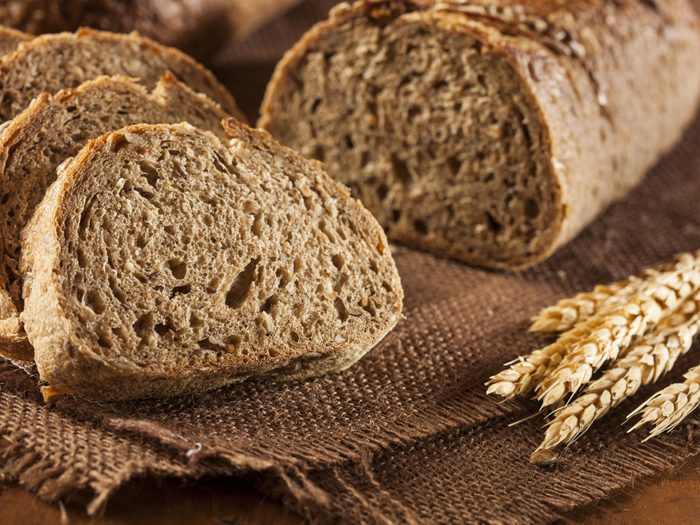
Whole-wheat bread
For people who include gluten in their diet, whole wheat bread can significantly up your fibre intake. One slice of white bread has about one gram of fibre, while whole-wheat bread contains two grams. This is because it includes the “whole” part of the wheat kernel, including the outer layer, which is the hard part of the kernel that contains all the fibre. White bread is made from kernels that have had outer layer removed, reducing its fibre content.
Check out 30 easy bread recipes you can bake at home.
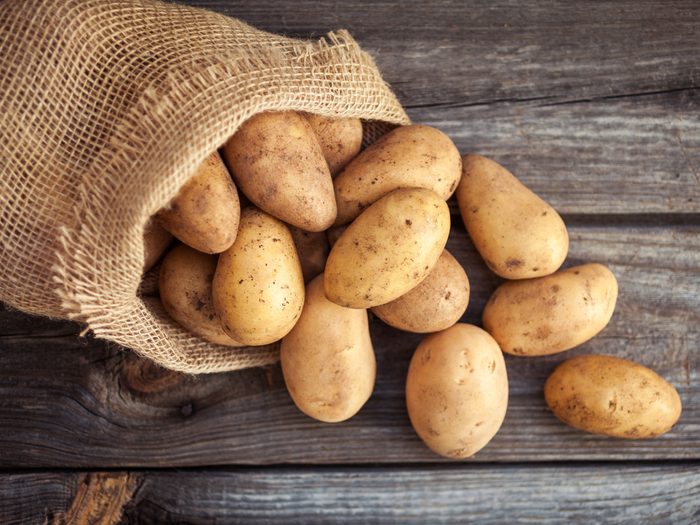
Potatoes (with the skins)
If you’re a meat-and-potatoes lover, you might not be getting enough fibre in your diet. Meat contains no dietary fibre, and while potatoes are not a high fibre food either, MacDonald says you can still boost the fibre in this perennial meal pairing by keeping the skin on the potatoes. You’ll find the highest fibre content in sweet potatoes, followed by white and Russet potatoes.
Find out the cooking mistakes that are making your meals unhealthy.
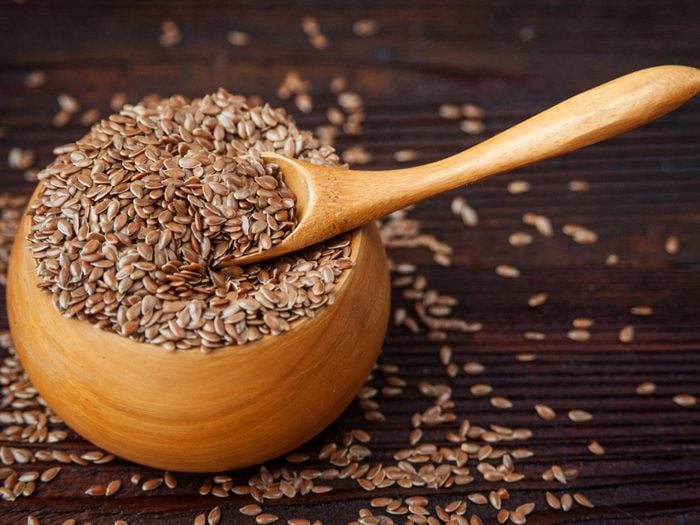
Flax seeds
Flax seeds are an excellent source of dietary fibre—just one tablespoon contains two grams of fibre (plus loads of other vitamins and minerals that contribute to a healthy diet). Flax seeds are easy to mix into smoothies, toss on salads or bake into your favourite sweets, making them a great way to increase your fibre intake with snacks and meals that you’re already eating.
These healthy smoothie recipes are a perfect place to start.
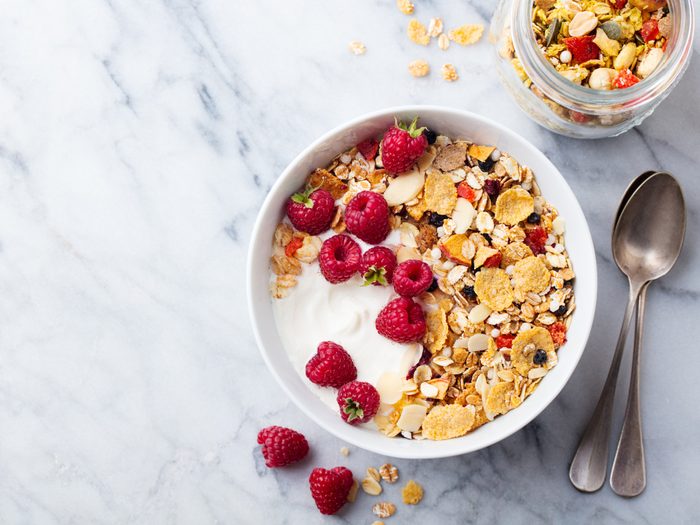
Some breakfast cereals
MacDonald says that those who love cereal for breakfast should look at the nutrition labels and opt for one with at least four grams of fibre per serving. That way, you’re eating food you think is yummy and ensuring that it contributes to your daily fibre intake.
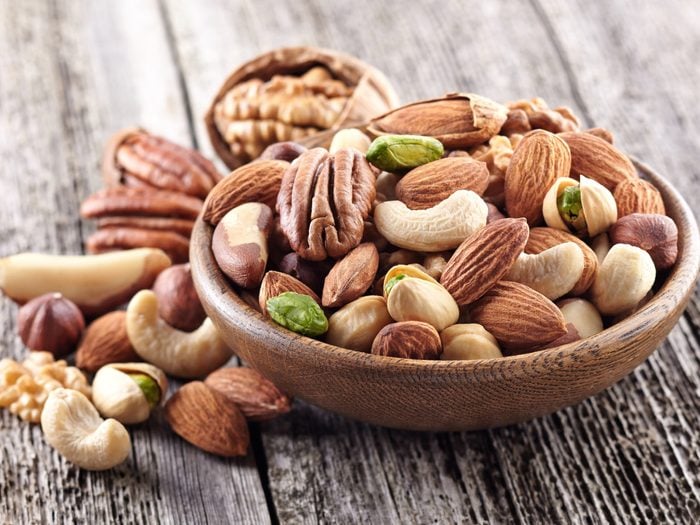
Nuts and seeds
Nuts and seeds are easy to add to salads or stir fries and can just as easily be eaten on their own. MacDonald suggests making your own trail mix with your favourite nuts, which makes getting your daily fibre a lot easier on the go.
Here are 12 foods that are worth buying organic.
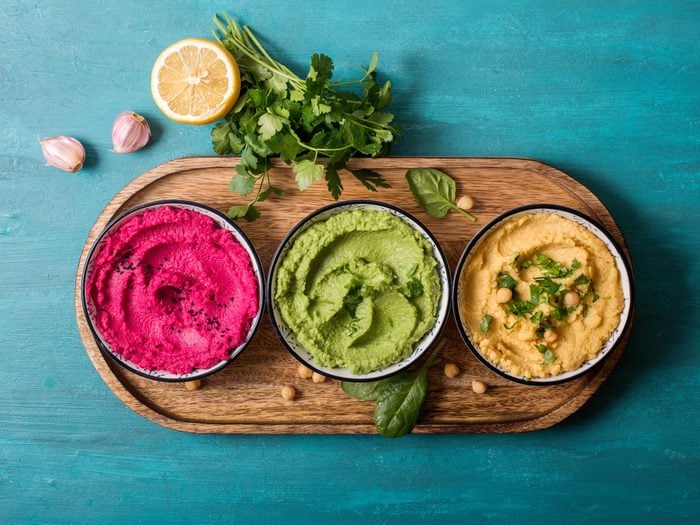
Bean-based dips and hummus
Bean-based dips or hummus make great fibre-filled snacks, says MacDonald, and can be used as a substitute to cream-based dips or dressings. You can also spread them on whole-grain bread as a high fibre snack.
While you’re at it, add these high-antioxidant foods to your cart.
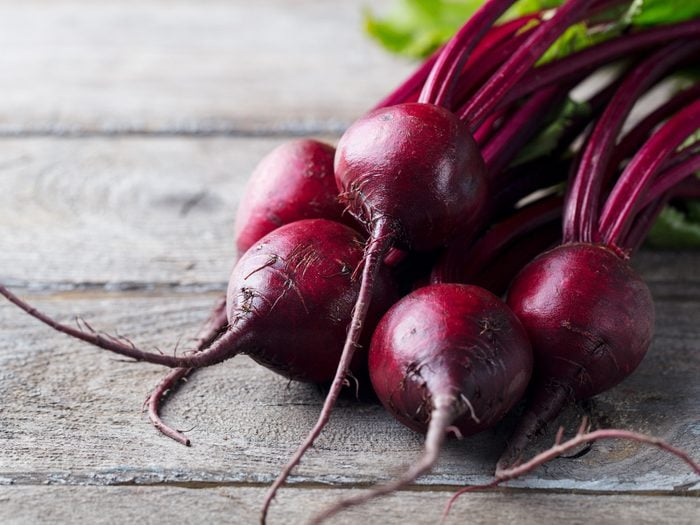
Beets
Beets have about 2 to 3 grams of fibre per 100 gram serving. They can be eaten raw or cooked, though fibre content goes down slightly when cooked. MacDonald suggests that they’re easy to sneak into muffins, casseroles, meatballs and even soup. The same can be done for other vegetables like carrots or zucchini.
Discover more impressive health benefits of beets.
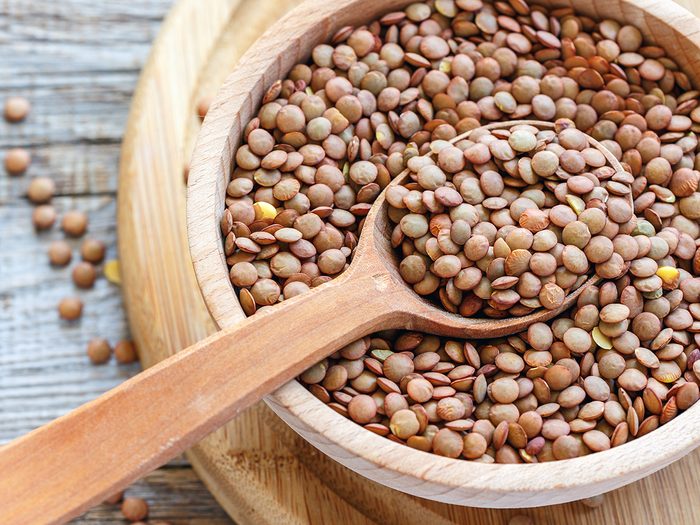
Lentils
Lentils are a part of the legume family and pack a fibre-heavy punch. One hundred grams of cooked lentils contain almost eight grams of fibre—that’s about a third of the daily requirement for women, and almost a quarter of the requirement for men. Lentils support heart health as well as digestive health and regularity. They also contain folate, which is important to women of childbearing age.
Psst—did you know that Canada is the world’s leading exporter of lentils?
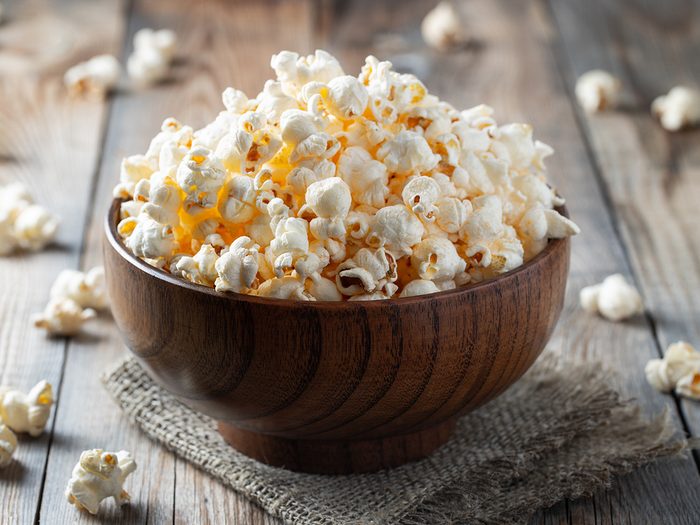
Popcorn
Want to add more high fibre foods to your diet with an easy snack? Just one cup of popcorn has 1.2 grams of fibre—and it’s highly likely you’re consuming more popcorn than that in one go!
Find out the best foods to eat before bed.
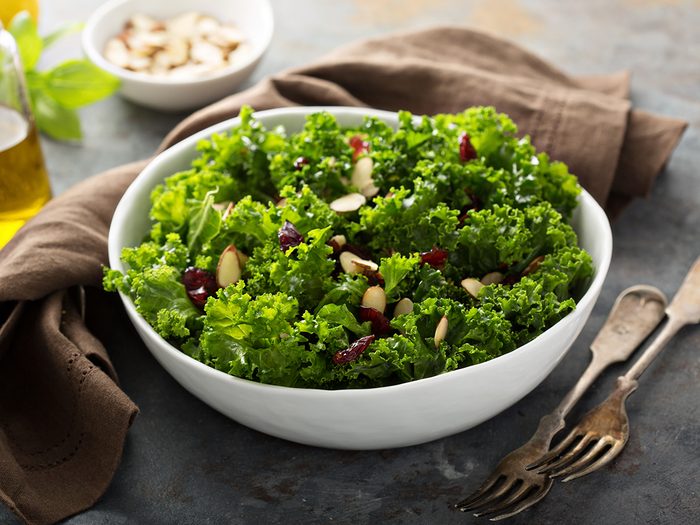
Salad
Vegetables in general have high fibre content, so go ahead and toss your favourite veggies into your bowl. If you like leafy greens, lettuce contains 1.3 grams of fibre per 100 grams, while kale has 4.1 grams of fibre per 100 grams. Wherever you can, try to keep the skin on the vegetables, as this is where most of the fibre is contained. In fact, up to 31 percent of a vegetable’s fibre can be found in its skin.
Now that you know which high fibre foods to add to your shopping list, brush up on the healthiest fish you can eat.